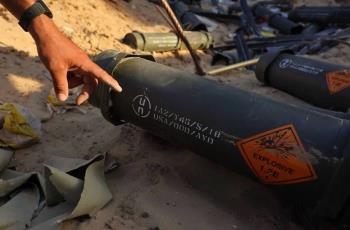Alwaght- Qatar, which is home to the biggest US military base in West Asia, has opened its own largest naval base amid ongoing tensions with Saudi Arabia, currently holding joint military drills with American forces.
The Al-Daayen coastguard base in Semaisima was inaugurated in a ceremony attended by Qatar’s Prime Minister Abdullah bin Nasser bin Khalifa Al Thani and commander of US Naval Forces in West Asia Vice Admiral Jim Malloy on Sunday.
Opening the sea base amid tensions with Saudi Arabia and while the Arab emirate is under a Saudi-led Arab blockade gives rise to some questions about Doha’s goals and the reflections of such move on the country and the region.
Qatar’s navy
Qatar’s navy is comprised of coastguard, marine police, and coastal artillery. Upon its independence in 1971, the Arab state lacked a navy. However, in the 1990s it built the first parts of its navy by purchasing arms and equipment from France and the US. Still, the country’s navy is only capable of limited protection of the territorial waters and the state’s commercial sea assets.
Since 2014, Qatar decided to strengthen its coastguard but when in 2017 Saudi Arabia severed diplomatic ties with Doha and imposed an all-out blockade, the Qatari leaders, knowing that their navy is far from being capable of a full-scale engagement with hostile forces, changed their mind. They planed to double the size of their navy by 2025. At the time, Qatar’s Minister of State for Defense Khalid bin Mohammad Al Attiyah during a supervision of the national forces said “we should not put all of the burden on the shoulders of the friends and allies. Some time we should undertake self-defense.”
According to the new strategy, the naval forces will increase to 7,000 from the current 3,000. The country initiated the naval project earlier this year. It ordered four frigates from Italy, as well as an amphibious ship, submarines, and patrolling boats from Turkey. It also bought RAM naval missile system from Germany. The tensions with Saudi Arabia provided Doha leaders with a chance to buy various military equipment from different providers. These were all used to equip the largest naval base in the country, located 30 kilometers from the capital Doha.
What does Qatar seek?
Qatar struggles to restore the balance of power with the hostile Arab states and also expand the range of its coastal defense. The country intends to equip the new base with a French-made surface-to-sea missile system that will broaden the country’s coastal defense range beyond 180 kilometers. Qatar leaders held Independence Day last year in a completely new way, displaying their expanded power and sending a message of deterrence to the hostile Arab countries. The state has the longest sea border and its sole ground border is with Saudi Arabia. Some 90 percent of its imports are made from the sea. Doha needs to develop the naval capability to secure the daily delivery of food and goods to its territory.
Moreover, Doha eyes increasing its LNG production to 110 million tons annually by 2024. If the Saudi-led camp decides to destabilize the sea traffic for Qatar, the country will go through a serious crisis.
“Through this base, we will now be better equipped to address maritime security, combat illegal immigration, carry out search and rescue, and provide protection to the nation’s strategic offshore assets such as oil and gas facilities,” General Abdel Aziz Abdullah al-Ansari, the head of the Department of International Cooperation at Qatar’s Interior Ministry, told Aljazeera.
Qatar also seeks specific prestige among those Persian Gulf Arab states that stayed friendly to Doha or at least refrained from adopting hardline policy towards it. Al-Ansari told Aljazeera that with Qatar’s naval power augmented, there will be a key cooperation element between Qatar and the (Persian) Gulf Cooperation Council’s friendly states like Kuwait and Oman.
When the US President Donald Trump visited Saudi Arabia in May 2017 and signed a deal for $110 billion worth of arms with Saudi Arabia, a month later Saudi Arabia, accompanied by Egypt, the UAE, and Bahrain, cut off ties with Qatar, imposed a ban, and threatened it with military action. Considering a record of Washington’s destabilizing actions in the region, Qatar does not want to fully rely on the US for its national security. But at the same time it tries to steer clear of tensions with the American administration.
Despite invitation of the commander of the US naval forces in the region, Qatar has diversified its defense cover to avoid utter reliance on Washington. Reports suggest that the country set up training centers in the sea base to train home forces in an effort to cut the dependence on foreign experts. The defense minister after a ceremony of signing a contract to procure some naval facilities and arms said that Doha does not intend to bring to Qatar foreign forces to fly the planes, drive the tanks, and sail the ships. In addition to the naval facilities, Qatar seeks to procure advanced air defenses. Despite a Saudi threat to attack Qatar once Doha buys S-400 Triumf air defenses from Russia, the Qatari leaders seem to be resolved to press for procurement of the Russian interceptors. In February 2019, Fahad bin Mohammad Al Attiyah, Qatar’s ambassador to Moscow, said his country was negotiating purchase of the S-400 systems with Russia.



























